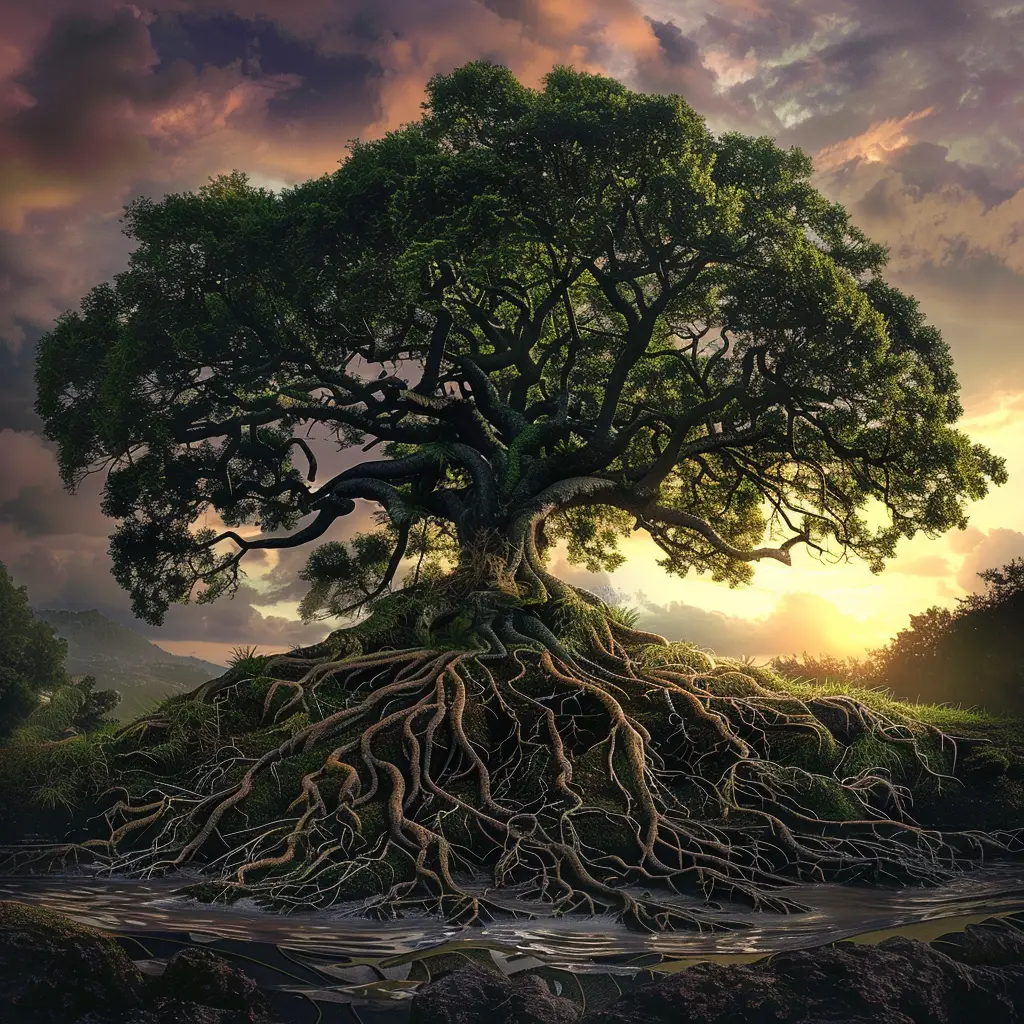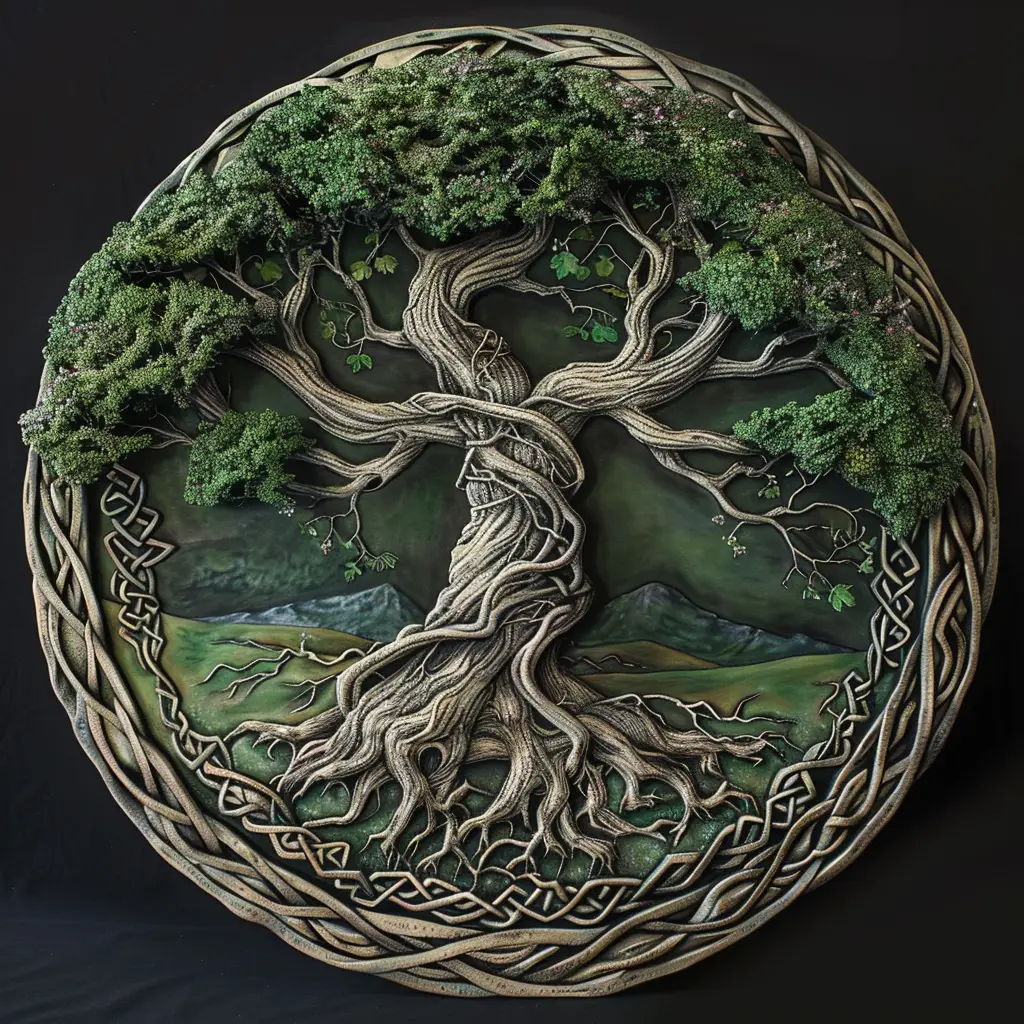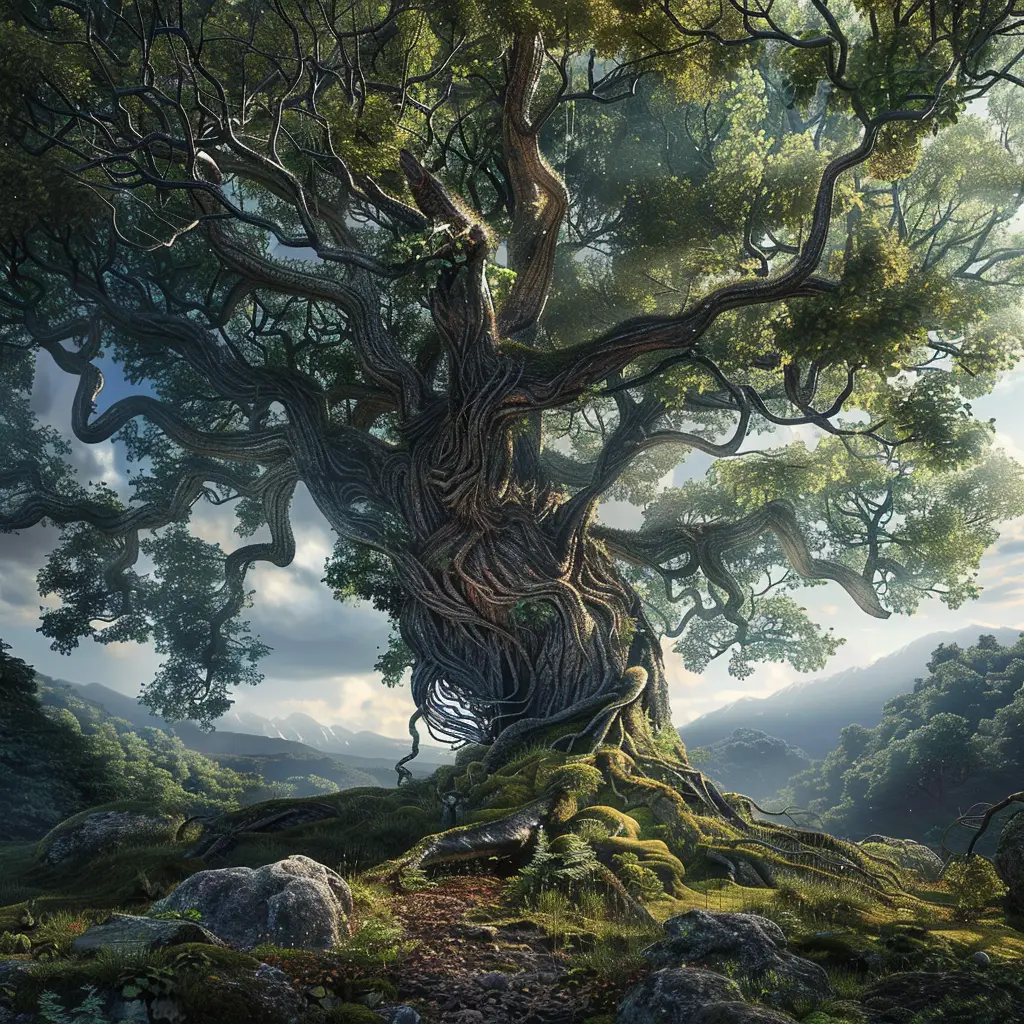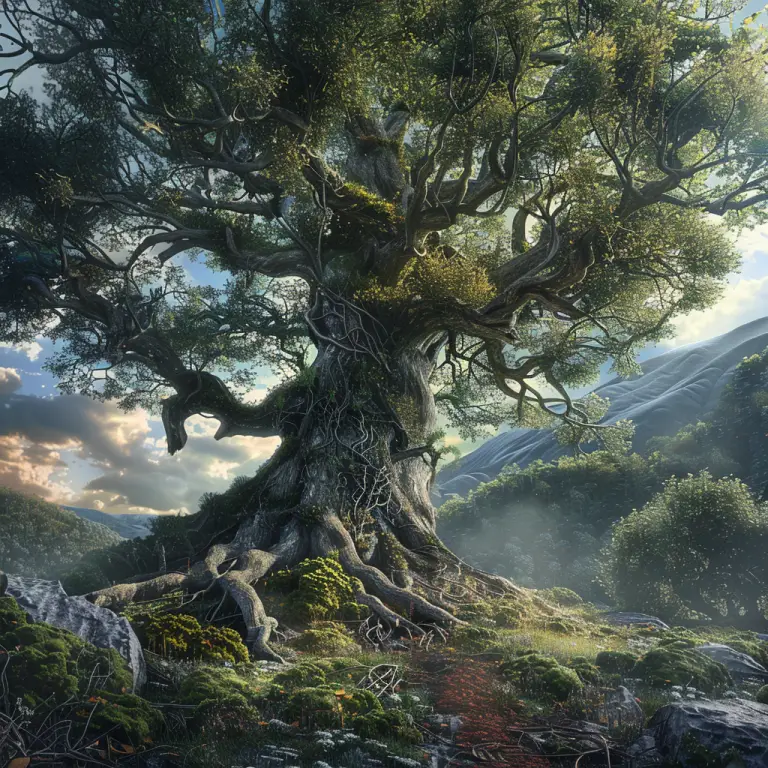Yggdrasil, often referred to as the World Tree, is a hugely central element in Norse mythology. It is an immense ash tree that connects the nine worlds of Norse cosmology. Yggdrasil’s branches extend over the heavens, and its roots reach into the underworld and the realm of the giants. Here are some key aspects of Yggdrasil:
Nine Worlds: Yggdrasil serves as the axis mundi, or cosmic axis, around which the nine worlds revolve. These worlds include Asgard (home of the Aesir gods), Midgard (the realm of humans), and various other realms inhabited by gods, giants, elves, dwarves, and other beings.
Three Roots: Yggdrasil is sustained by three roots. One root extends to Asgard, another to Jotunheim (the realm of the giants), and the third to Niflheim (the realm of ice and mist). Each root is associated with a well: Urdarbrunnr (Well of Fate), Mimir’s Well (Well of Wisdom), and Hvergelmir (Roaring Kettle).
Creatures: Yggdrasil is home to various creatures, including the eagle perched on its highest branch, the squirrel Ratatoskr who runs up and down its trunk, and the serpent Níðhöggr who gnaws at its roots.
Symbolism: Yggdrasil represents the interconnectedness of all things in the cosmos. It symbolizes the cyclical nature of life, death, and rebirth, as well as the cosmic order and balance.
End Times: According to Norse mythology, Yggdrasil will play a role in the events leading up to Ragnarok, the end of the world. During Ragnarok, Yggdrasil will tremble, its branches will shake, and its roots will be torn asunder, signalling the destruction of the cosmos. However, from its ashes, a new world will arise.
Yggdrasil, sometimes spelled Yssidrigal in older or alternative sources. It is most often described as an ash tree, though some later interpretations have suggested it could be a yew. In the surviving texts, particularly the Poetic Edda and Prose Edda, Yggdrasil is portrayed as a vast and eternal world tree whose roots and branches hold together the Nine Realms of existence. Its branches stretch far into the heavens, while its roots extend deep into different worlds, including Asgard, Midgard, and Niflheim.
The choice of the ash tree is significant. In Northern Europe, ash trees were considered strong, resilient, and deeply connected with human life and fate. Ash wood was used in weapons, tools, and building, making it a symbol of strength, endurance, and connection between the physical and spiritual worlds. The tree was not only seen as the axis mundi, or the central pillar of the cosmos, but also as a living symbol of the interconnectedness of all beings and realms.
Such a symbolic tree in Norse mythology, we use it in our engraving projects quite heavily as not also is it prominent in mythology, but it engraves really well.!!



